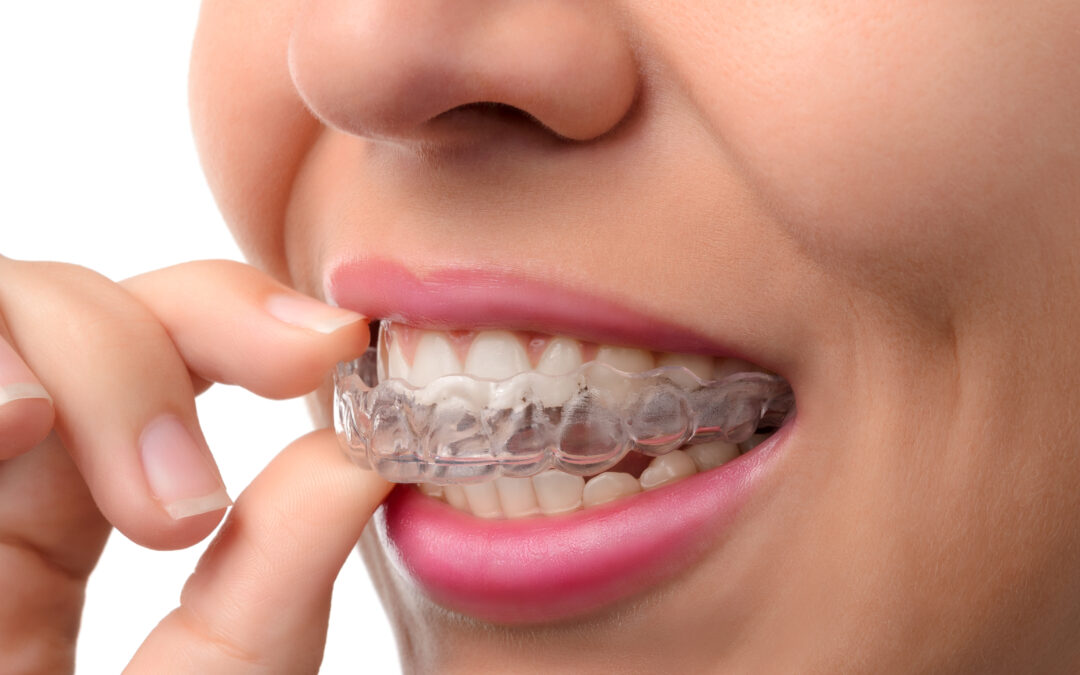Invisalign is a popular dental treatment for people wanting an alternative to braces to straighten teeth and fix their bite patterns. Up until Invisalign was rolled out when a patient needed their teeth alignment corrected, they only had braces as an option which carries drawbacks that often stop someone from correcting their teeth.
It’s important, when looking into different treatments, to understand how it works so you can make an informed decision with your dentist for the right treatment for you. If you’re considering Invisalign and curious as to how it works, read on and learn if joining Invisalign users is the right decision for you.
How Invisalign Works
Invisalign works by using clear aligners to move teeth into the desired position and created from computer-generated images and impressions of your mouth to create a series of molds. Over the months, Invisalign pushes the teeth steadily using gentle pressure to create tooth movement and correct them.
The clear aligners that are custom fitted to your teeth are removable, making it much easier to maintain your regular brushing habits and not worry if food and plaque get caught in the Invisalign trays. One of the greatest appeals of Invisalign is that you can remove and clean them, unlike braces where brushing and keeping food from building up can be a difficult annoyance.
Some people may wonder if Invisalign is for all types of patients or if there are restrictions on who can use them. You’ll be happy to hear that Invisalign is available for most people who want to improve their smile or arrange their teeth better, but Invisalign only works when all of the baby teeth have been extracted or emerged.
The Invisalign Process
Now that you know what Invisalign is and how it works, we can focus on the process of a patient getting Invisalign. Much like traditional braces, there are several steps before Invisalign is made and applied:
Initial Consultation and X-Rays
The first step towards Invisalign is a consultation with your dentist to discuss the process, how it works, and the cost to you. If you decide to move forward, your dentist will take X-rays and photographs of your mouth, teeth, and face from different angles to create a detailed map of your mouth’s mechanics. Once the map is assembled an impression can be taken for the lab that makes the Invisalign aligners (trays).
First Fitting
The first set of Invisalign trays you receive are based on the impressions taken before and will likely feel tight when they’re put on. Your dentist will review the fit and may try a few different molds before finding the one you can take home. They’ll ask you different questions about the tray, like how it feels, whether you can feel any movement, and if they’re uncomfortable. If you feel any pain, it’s important to talk about it with your dentist so adjustments can be made, but remember that they’ll feel uncomfortable at first.
Tray Change
Invisalign is a multi-step process with different trays being used as your teeth move more and more into the new positions. Every one or two weeks, depending on what your dentist finds during check-ins, you’ll receive the next phase of trays.
Benefits of Invisalign Dental Treatment
Compared to traditional braces, Invisalign offers several advantages that they don’t, including:
- Traditional braces can take between 16 to 18 months, sometimes longer than 2 years depending on the goal of the dental treatment and the patient’s circumstances teeth-wise. Invisalign treatment is designed with a precise movement planned out and usually takes around a year to complete.
- With traditional braces, it’s important to see your orthodontist frequently for adjustments and monitoring progress. These dental office visits can include replacing a bracket, changing the wire size, tightening, or wiring with extra wires, which can take several hours. With Invisalign, the visits you do make to your dental office won’t be nearly as long. These visits are primarily to have a set of aligners switches and to ensure everything is moving as it should.
- Traditional braces can be brushed around but leave a great deal of space covered and that can make it more difficult to clean around the wires. If food gets behind any of the metal, you would need a small brush or try to pick the food out with another dental tool and plaque easily gets stuck around and inside the brackets, which if left there can cause gum disease or tooth decay. With Invisalign, you’re able to remove the trays and continue with your normal dental routine.
Dental Health is a Click Away
If Invisalign sounds like the right treatment for you to have the smile you deserve, Dr. Li and the care team at Ellerslie 66 Dental Clinic also provide Invisalign treatments and strive to make dental care affordable, and accessible to all of our patients. We will work with you to find a treatment plan that works for your financial situation.
If you have questions about our emergency dental service, our team of compassionate professionals can help you understand all of your options. Contact us now or give us a call at (780) 705-9866.

